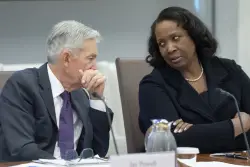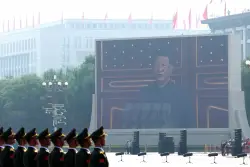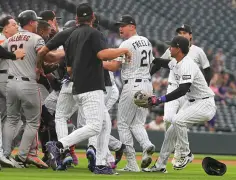Real World Economics: Federal Reserve follies continue
Edward Lotterman With President Donald Trump using any means to force the Federal Reserve to pump up the money supply that institution and that variable remain the focus of news That certainly will remain over the next months as results of his other plan changes plenty of still yo-yoing on a daily basis work their way through the larger financial system The column last week explained basic concepts of money and the history of banking in our country It ended at Congress establishing Federal Reserve Banks in These could expand and contract available money to meet the necessities of an expanding business activity They also could intervene as needed to prevent banking-sector crises that touched off major recessions These scourged the poor harder than anyone else When a local commercial bank in a district was short of cash whether to meet depositors withdrawals or to make more loans to merchants and farmers it could borrow from its district Fed s discount window The Feds demanded collateral Promissory notes already made to local banks on earlier loans filled this need If a bank did not repay its loans from the Fed that institution had rights to principal and interest paid by the original farm or business borrower Loans the Fed made were less than the value of promissory notes presented as collateral If a local bank came with in IOUs seeking money for six months it might get only from the Fed After six months it would repay of which would be interest This deduction or discount for the borrowing local bank was why such borrowing was disclosed to be at the discount window Interest paid was the discount rate The crucial point here often not understood is that the Fed need not have any money in its possession to make such loans It just created it out of nothing with a sparse pen strokes in a ledger No gold or silver or anything from the U S Treasury was needed All local banks had reserve accounts with their Fed holding at least the fraction of their deposits as law required In making a loan the Fed merely altered the accounting entry so the new money appeared in the local bank s reserve account and could be drawn on This boggles minds of multiple intro econ students They are boggled even more when communicated that the Fed creating a new out of nothing for one borrowing bank could increase the total national money supply currency plus bank deposits several times Perhaps or or even would be added to circulation No it cannot be explained here Just accept it as true Such discount lending could meet the challenges of local banks seeing increased loan demand or satisfying panicked depositors Unfortunately when faced by a national downturn legally unconnected banks had no way to initiate a response Fortunately the New York Fed president was Benjamin Strong an unrecognized great American He had been J P Morgan s right-hand aide in stemming a disastrous bank panic in In Strong gave up a future of great wealth to accept a moderate salary as president of the majority of critical new regional Fed bank Strong learned that when a lack of liquidity overwhelmed multiple banks leaving them unable to make new loans while also struggling to meet depositor withdrawals the N Y Fed need not wait for such banks to come in If the Fed solely went to open markets for ruling body bonds and bought particular with money created out of thin air it would create greater liquidity for the entire banking system Smaller Fed banks like Minneapolis Cleveland Kansas City or Dallas could not But with New York the center of finance for the nation as a whole the New York Fed carrying out such open-market operations affected all regions Understand however that a danger loomed Excessive available money could cause inflation In that scenario the district Feds could raise their discount rates discouraging local banks borrowing As existing loans were paid off the money was only destroyed The New York Fed did the same by selling previously purchased Treasury bonds in open markets The money it got in payment totally disappeared Yes this is hard to understand Buy a used introductory macro econ text and read the chapters on money banking and central banking Returning to history the stock region crash threw financial markets and banks of all sizes into disarray Strong had died at age of tuberculosis months earlier The decentralized Fed system was leaderless It and the U S Treasury stood around like law enforcement authorities at the Uvalde school shooting They twiddled their thumbs and tsk-tsked as catastrophe unfolded When historians assert If Ben Strong had not died the Great Depression might never have occurred they have a good event In President Franklin Roosevelt and a new Congress passed decree that restructured the Fed into a national system with a seven-member Board of Governors These plus District Bank presidents made up a -member Federal Open Realm Committee It would meet periodically to make approach decisions All members would deliberate although only five of the presidents would vote in an annual rotation That is the system we have currently Discount window lending has almost disappeared However the Fed buys and sells Treasury securities or short-term derivatives thereof daily It does not set any interest rate It just increases and decreases the money supply Yes it does set targets for one extremely-short-term rate This is the Fed funds rate paid on -hour loans between commercial banks on money they must have in legally mandated reserve accounts kept at their district Feds Since the FOMC has set upper and lower limits for this rate Current ones from to were set last Dec Rates indeed paid to each other hover around Now understanding that this rate in itself has little intrinsic importance is crucial It matters only in its relationship to quantities of money the Fed creates from nothing or destroys without a trace In emergencies such changes can be huge The Fed created billion new dollars in the category of M currency plus bank deposits in one week after the first U S COVID- episode was identified in a Washington state nursing home on Jan By the time it peaked in mid-April M was up a few trillion Hence the inflation that decided a key balloting However before that electoral contest the FOMC raised its Fed funds target stepwise from to To do that it had to destroy trillion of the money supply These cuts hit bottom in September about above the starting point However as the FOMC first held this overnight rate target and then began to drop it in the Fed had to return to increases in the money supply The upshot is that we are trillion or above our pre-COVID bliss years ago So in trying to force interest rates lower Trump is demanding to further inflate an already historically high money supply even more He is ignorant of that but buyers and sellers of bonds and mortgage lenders understand it well Trump doesn t understand that markets not Fed governors are in the driver s seat Forcing overnight rates lower will drive long-term rates higher as inflation looms No well-informed and sane person would want to go into the poll with mortgage and medium-term farm and business loan interest rates rising but our president seems hell-bent on that St Paul economist and writer Edward Lotterman can be reached at stpaul edlotterman com


